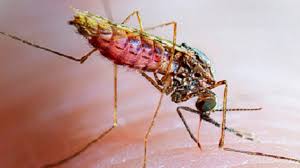Community Compliance in the Use of Mosquito Nets for Malaria Prevention
DOI:
https://doi.org/10.31965/jtdhs.v3i1.2198Keywords:
Prevention, Malaria, Mosquito netsAbstract
Malaria is an acute, life-threatening febrile disease primarily found in tropical areas with Malaria endemicity. In 2023, East Sumba Regency became the second-highest Malaria case after Southwest Sumba. Malaria control efforts remain a primary target in achieving optimal public health and reducing Malaria incidence. One effort is the distribution of free long-term insecticide-treated bed nets. However, Malaria cases in Village X, the research location, are still relatively high. Community behavior and awareness significantly influence the use of bed nets, thereby reducing Malaria incidence. This study aims to determine the description of the community's existence in the use of bed nets. This type of research uses a quantitative research method. The sampling technique is Accidental Sampling. The instrument used is a questionnaire with a sample size of 30 respondents who meet the inclusion criteria. Where the questionnaire was distributed directly. Because this study is descriptive research, the data analysis technique is carried out by calculating the total compliance score, grouping the level of compliance (compliant and non-compliant), presenting data in the form of a frequency distribution table, and interpreting the results. The research was conducted in East Sumba Regency in village X. Based on the results of the study on 30 community respondents in the research area, data was obtained that most of the respondents were not compliant in using mosquito nets, namely 18 people (60%), while those who were compliant in using mosquito nets were 12 people (40%). This shows that the level of community compliance in using mosquito nets is still relatively low, because more than half of the respondents have not consistently used mosquito nets as an effort to prevent Malaria.
Downloads
References
Badan Pusat Statistik Provinsi Sumba Timur (2023).
Baume, C. A., & Marin, M. C. (2008). Gains in awareness, ownership and use of insecticide-treated nets in Nigeria, Senegal, Uganda and Zambia. Malaria Journal, 7(153). https://doi.org/ https://doi.org/10.1186/1475-2875-7-153
Creswell, J. W. (2013). Research Design Pendekatan Kualitatif, Kuantitatif, dan Mixed. Pustaka Pelajar.
Darmawansyah, J. H., Ravika Ramlis, Wulandari. (2019). Determinan Kejadian Malaria(Kajian Epodemiologi di Daerah Wabah). Jurnal Ilmu KesehatanMasyarakat, 136-142. https://doi.org/10.33221/jikm.v8i03.370
Fikadu, M., & Ashenafi, E. (2023). Malaria: An Overview. Infection and Drug Resistance, 16(null), 3339-3347. https://doi.org/10.2147/IDR.S405668
Gardner, M. J., Hall, N., Fung, E., White, O., Berriman, M., Hyman, R. W., Carlton, J. M., Pain, A., Nelson, K. E., Bowman, S., Paulsen, I. T., James, K., Eisen, J. A., Rutherford, K., Salzberg, S. L., Craig, A., Kyes, S., Chan, M.-S., Nene, V.,…Barrell, B. (2002). Genome sequence of the human malaria parasite Plasmodium falciparum. Nature, 419(6906), 498-511. https://doi.org/10.1038/nature01097
Greenwood, B., & Mutabingwa, T. (2002). Malaria in 2002. Nature, 415(6872), 670-672. https://doi.org/10.1038/415670a
Gregorius Bace Mukin, D. M. T., Muhamad Khadafi. (2023). Perilaku Penggunaan Kelambu Berinsektisida Dalam Upaya Pencegahan Penyakit Malaria. INHEALTH : INDONESIAN HEALTH JOURNAL. https://doi.org/https://doi.org/10.56314/inhealth.v2i1.101
Gunawan. (2020). Epidemiologi Malaria dalam Malaria: Epidemiologi, Patogenesis, Manifestasi Klinis, danPenanganannya. Dikutip oleh Harijanto P.N. EGC.
Harmendo Harmendo , N. E. W., Mursid Raharjo. (2009). Faktor Risiko Kejadian Malaria di Wilayah Kerja Puskesmas Kenanga Kecamatan Sungailiat Kabupaten Bangka Propinsi Kepulauan Bangka Belitung. Jurnal Kesehatan Lingkungan Indonesia, 8 (1) https://doi.org/https://doi.org/10.14710/interaksi.%v.%i.166 - 176
Hermalini, M. F., Erwan C. (2023). Faktor-Faktor yang Berhubungan dengan Pencegahan Malaria. J Ilm Multi Sci Kesehatan, 15 (2), 36-48.
Irfandi Rahman, M. P. H. W., Sasrianto D, Fabanyo RA. (2023). Hubungan Perilaku Dan Ketepatan Penggunaan Kelambu Berinsektisida Dengan Kejadian Malaria. 48-56. https://doi.org/https://doi.org/10.30762/ask.v5i2.3842
Katarina. (2022). Kajian kepatuhan penggunaan kelambu dalam pencegahan malaria di wilayah endemis. Lembaga Penelitian dan Pengabdian Masyarakat Universitas Cenderawasih. PROSIDING SEMINAR HASIL PENELITIAN EDISI III 2017 “PENGEMBANGAN IPTEKS DAN SENI” https://doi.org/Diakses dari https://lppm.uncen.ac.id/wp-content/uploads/2022/04/8.-FKM-Katarina-KAJIAN-KEPATUHAN-Ok.pdf
Notoatmodjo. (2021). Perilaku Kesehatan. Rineka Cipta.
Nur Hamdani N, K., Misrykordiati Mira. (2020). Factors Related To The Event Of Malaria In The Working Area Of Wandai Puskesmas, Wandai District, Intan Jaya Regency, Papua. JURNAL Promotif Preventif, 2 (2), 1-7.
Nurfitrianah. (2013). Hubungan kebiasaan penggunaan kelambu dengan kejadian malaria pada masyarakat. [Tesis tidak dipublikasikan]. Universitas Hasanuddin].
Onyeneho. (2013). Sleeping under insecticide-treated nets to prevent malaria in Nigeria: What do we know? Journal of Health, Population and Nutrition, 31(2), 243–251. https://doi.org/https://pmc.ncbi.nlm.nih.gov/articles/PMC3702346/
PACHECO, A. A. E. a. M. A. (2020). Malaria Molecular Epidemiology: An Evolutionary Genetics Perspective. Advances in Molecular Epidemiology of Infectious Diseases. https://doi.org/10.1128/microbiolspec.AME-0010-2019
Paramita, R. W. D., Rizal, N., & Sulistyan, R. B. (2021). Metode Penelitian Kuantitatif: Buku Ajar Perkuliahan Metodologi Penelitian Bagi Mahasiswa Akuntansi & Manajemen. Widya Gama Press Stie Widya Gama Lumajang.
Puskesmas Waingapu. (2023).
Rosenthal, P. J. (2022). Malaria in 2022: Challenges and Progress.
The American Journal of Tropical Medicine and Hygiene, 106(6), 1565–1567. https://doi.org/https://doi.org/10.4269/ajtmh.22-0128
Tya Palpera Utami, H. H., Ummi Kaltsum, Uthu Dwifitri, Yanti Meriwati, Yuniwarti, Yusro Paridah, Zulaiha (2022). FAKTOR RISIKO PENYEBAB TERJADINYA MALARIA DI INDONESIA : LITERATURE REVIEW. Jurnal Surya Medika.
Waingapu, P. (2022). Laporan Tahunan Puskesmas Waingapu.

Downloads
Published
How to Cite
Issue
Section
License
Copyright (c) 2025 Journal of Tropical Diseases and Health Science

This work is licensed under a Creative Commons Attribution-ShareAlike 4.0 International License.





